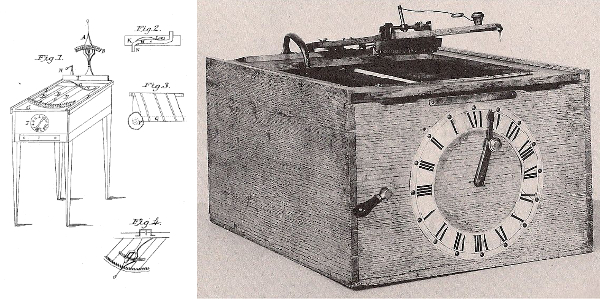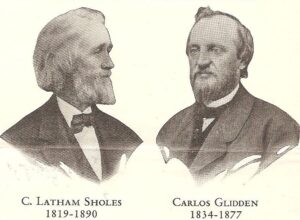Was this the beginning of technology?
On July 23rd, 1829, William Austin Burt patented the “typographer,” later to be known as the typewriter.

The very first patent for a “writing machine” was given to one Henry Mill in 1714, but nothing survived to prove its existence. For this reason, Burt’s typographer in 1829, which printed one single letter after another, was the first known typewriter. There then followed many other designs both in the United States and in Europe, but it was not until 1874 that the typewriter became commercially successful, and the beginning of a new technology came into existence.
 This was due to two inventors by the name of Christopher Sholes and Carlos Glidden who made an agreement with the Remington Company to have their design manufactured in large quantities. The first machines were like sewing machines in appearance. Sholes was the man who introduced the actual positioning and layout of letters (QWERTY) on the keyboard, which is still in use today.
This was due to two inventors by the name of Christopher Sholes and Carlos Glidden who made an agreement with the Remington Company to have their design manufactured in large quantities. The first machines were like sewing machines in appearance. Sholes was the man who introduced the actual positioning and layout of letters (QWERTY) on the keyboard, which is still in use today.
The evolution of typographer to typewriter to electric typewriter to electronic machine and eventually to the word processing elements of computers, is all part of the “human need to communicate” and to do it in the speediest of fashion. Machines have gradually emerged throughout time which have revolutionized writing. In fact, the need for speed was first announced in the early Remington advertisements which stated that: “To save time is to lengthen life.” Sometimes I wonder!
Nonetheless, from the days of Burt’s ‘typographer’ in 1829 to the computerized invention of the World Wide Web in a Geneva laboratory in 1990, we have come a very long way. The World Wide Web server and browser was available to the public in 1991, a mere thirty-two years ago. It seems in many ways much longer, and now we can hardly remember a time before the internet and electronic mail. The old-fashioned typewriter meanwhile has become an historical artifact.
But, for a moment, let’s return to the good old-fashioned typewriter and add two more interesting facts. Mark Twain, the American novelist, was apparently the first author to submit a typed manuscript to a publisher. It was purported to have been typed on a Remington Number 1, invented by Sholes and Glidden. And one of the first times a typewriter was mentioned in a book was in the Sherlock Holmes mystery entitled A Case of Identity written in 1892. Holmes solved the case by identifying the imposter’s typewriter.
On a website that offers fascinating facts on certain dates of the year, the “Thought for The Day” was Even if you’re on the right track, you’ll get run over if you just sit there.
This seemed to me to be particularly applicable when applied to the progress of technology since 1829 that helped the world communicate in the speediest of fashions. Back then, a letter, written or typed, would have taken months to reach the other side of the world. Today, by electronic mail, it is there in seconds. Throughout the decades, those ingenious inventors who were ‘on the right track’ certainly did not just sit still. They kept on moving forward.
